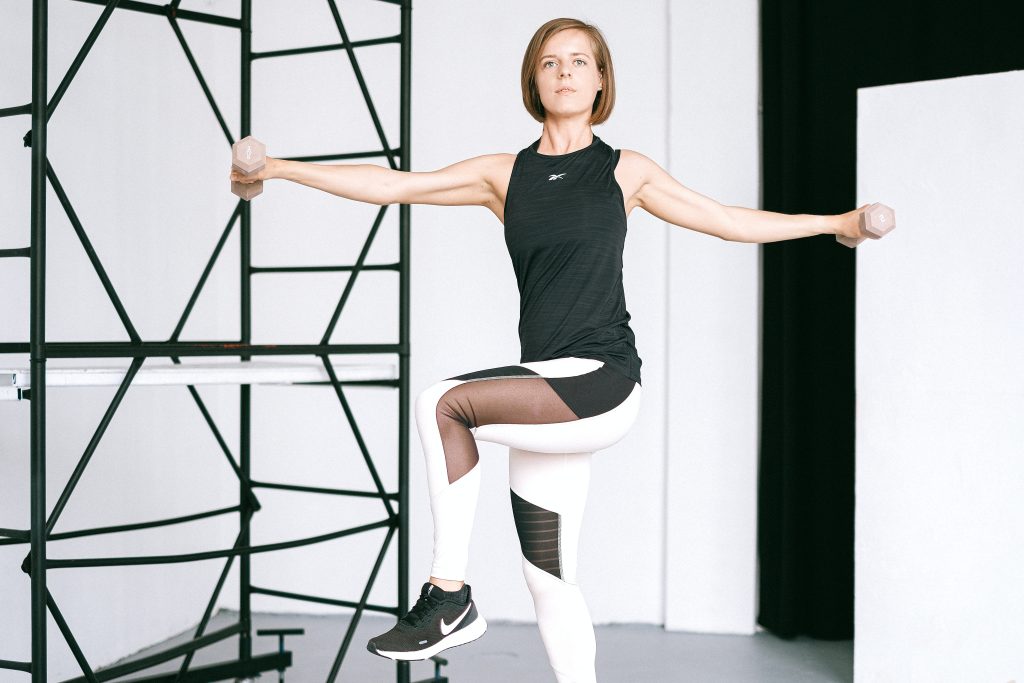Learn about the numerous benefits of exercise for managing diabetes and improving overall health.
Discover the Benefits of Exercise for Diabetes
Are you ready to dive into the world of exercise and discover its incredible benefits for diabetes? Strap on your sneakers and get ready to sweat it out, because we’re about to explore the wonders that physical activity can do for you. From understanding the basics of diabetes to crafting your own personalized exercise plan, this article has got you covered! Let’s get started!
Understanding Diabetes: An Overview

Before we jump into the exciting world of exercise, it’s crucial to understand the ins and outs of diabetes. Diabetes, my friend, is not a one-size-fits-all condition. It comes in different types, each with its own quirks and characteristics.
Diabetes is a complex metabolic disorder that affects the way our bodies regulate blood sugar, or glucose. Glucose is the primary source of energy for our cells, and insulin, a hormone produced by the pancreas, helps transport glucose from the bloodstream into the cells. When this delicate balance is disrupted, diabetes takes center stage.
Types of Diabetes
First on the list, we have Type 1 diabetes. This sneaky little bugger is an autoimmune disease where the pancreas decides to go rogue and stop producing insulin altogether. It often makes an unexpected appearance during childhood or adolescence, throwing life a curveball that would stump even the craftiest of baseball players.
Type 1 diabetes requires lifelong insulin therapy to manage blood sugar levels. People with this type of diabetes must carefully monitor their glucose levels, count carbohydrates, and administer insulin through injections or an insulin pump. It’s a daily balancing act that requires constant vigilance and adjustment.
Next up, we have Type 2 diabetes. This is the most common form and usually pops up later in life. In Type 2 diabetes, your body becomes resistant to insulin or doesn’t produce enough of it, playing hard-to-get with this precious hormone. It’s like that mysterious person who’s always playing hard to get, but we’ll win them over with some exercise tricks up our sleeve.
Type 2 diabetes is often associated with lifestyle factors such as poor diet, sedentary behavior, and excess weight. While genetics can play a role, making healthy lifestyle choices can significantly reduce the risk of developing this type of diabetes. Treatment may involve lifestyle modifications, oral medications, and, in some cases, insulin therapy.
Last but not least, there’s gestational diabetes. This temporary form of diabetes likes to show up unannounced during pregnancy, leaving expecting mothers scratching their heads in confusion. Don’t worry, though! Gestational diabetes usually takes its final bow after the baby arrives, making room for a more peaceful post-pregnancy life.
Gestational diabetes occurs when hormonal changes during pregnancy affect insulin sensitivity, leading to elevated blood sugar levels. It’s important to manage gestational diabetes to ensure the health of both the mother and the baby. This typically involves monitoring blood sugar levels, following a balanced diet, and staying physically active.
Common Symptoms and Complications
Diabetes has a way of making its presence known, often with a few telltale signs that something isn’t quite right. Feeling like you’re constantly running on empty? Frequent trips to the bathroom? That unquenchable thirst? These could all be potential symptoms of diabetes.
However, it’s important to note that some people with diabetes may not experience any symptoms at all, especially in the early stages. Regular check-ups and blood sugar monitoring are essential for early detection and effective management of the condition.
But wait, there’s more! Diabetes also throws some curveballs in the form of complications. Think of them as unwanted guests crashing your diabetes party. From nerve damage to heart problems, diabetes complications can be a real handful. But fear not, exercise is here to save the day!
Regular physical activity can help improve insulin sensitivity, lower blood sugar levels, and reduce the risk of complications associated with diabetes. Exercise promotes cardiovascular health, strengthens muscles, and enhances overall well-being. It’s like a superhero swooping in to save the day, armed with a cape made of endorphins and a shield of improved blood sugar control.
So, whether you’re dealing with Type 1, Type 2, or gestational diabetes, understanding the different types, symptoms, and potential complications is key to managing the condition effectively. And with exercise as your trusty sidekick, you’ll be well-equipped to navigate the exciting world of diabetes management!
The Role of Exercise in Diabetes Management
Now that we’ve got a good grasp on diabetes, it’s time to understand why exercise is the superhero we’ve all been waiting for. Picture this: exercise swoops in, cape billowing in the wind, to save the day by helping you manage your diabetes like a pro.
But what exactly happens when you engage in regular exercise? Let’s dive deeper into the fascinating world of how exercise affects blood sugar levels.
How Exercise Affects Blood Sugar Levels
When you exercise, your muscles are like a sponge, soaking up all that glucose from your bloodstream. This fabulous feat helps to lower your blood sugar levels and keep them in check. It’s like a dance party in your body, with glucose busting out some epic moves on the dance floor, thanks to exercise!
But that’s not all, folks! Exercise also makes your body more sensitive to insulin. It gives insulin a charming little nudge, helping it do its job better and escorting glucose into your cells. Think of it as insulin’s personal wingman, swooping in to make sure glucose finds its rightful place.
Imagine your body as a well-choreographed ballet, with exercise leading the way and blood sugar levels gracefully following its lead. It’s a symphony of movement and regulation, all thanks to the power of exercise.
Exercise and Insulin Sensitivity
Ready for some next-level knowledge? Regular exercise can actually improve your body’s insulin sensitivity. It’s like a magic trick, but without the smoke and mirrors. As you embark on your exercise journey, your cells become more receptive to insulin’s sweet whispers, making it easier for glucose to enter. It’s like turning up the volume on insulin’s voice, so it can be heard loud and clear.
Imagine your body as a finely-tuned instrument, with exercise fine-tuning your insulin sensitivity. With each workout, your cells become more attuned to insulin’s signals, creating a harmonious balance between glucose and insulin. It’s a beautiful symphony of metabolic harmony.
So, lace up those sneakers and get ready to embark on a journey of exercise-induced diabetes management. With every step, every rep, and every movement, you’ll be empowering your body to take control of diabetes like the superhero it is.
Different Types of Exercise for Diabetes
Now that you’re all fired up about exercise, it’s time to explore the different types that can help you manage diabetes like a rockstar. We’ve got a trio of exercise options that will make you feel like you’ve won the lottery!
Aerobic Exercises
Ready to get your heart pumping and your blood flowing? Aerobic exercises, such as brisk walking, jogging, or dancing, are your go-to options. These cardiovascular goodies not only burn calories but also improve your heart health and boost your mood. It’s like a double scoop of awesomeness!
When you engage in aerobic exercises, your body starts to work harder, requiring more oxygen to fuel your muscles. As a result, your heart rate increases, and you begin to breathe faster. This increased oxygen intake helps improve your cardiovascular fitness and strengthens your heart, reducing the risk of heart disease, a common complication of diabetes.
Additionally, aerobic exercises help your body become more sensitive to insulin, the hormone responsible for regulating blood sugar levels. By increasing insulin sensitivity, aerobic exercises can help lower your blood sugar levels and improve your overall diabetes management.
But the benefits don’t stop there! Aerobic exercises also release endorphins, the feel-good hormones, which can boost your mood and reduce stress. So, not only will you be improving your physical health, but you’ll also be enhancing your mental well-being.
Strength Training
Who said lifting heavy objects was just for those muscle-bound bodybuilders? Strength training can work wonders for people with diabetes too! By flexing those muscles with resistance exercises and weightlifting, you’ll build strength, increase your metabolism, and burn some serious calories. Plus, it will make you feel like a superhero, which is always a bonus.
Strength training involves using resistance, such as dumbbells, resistance bands, or your own body weight, to challenge your muscles. When you perform strength training exercises, your muscles adapt by becoming stronger and more efficient. This increased muscle mass not only improves your physical appearance but also helps regulate blood sugar levels.
When you engage in strength training, your muscles require more glucose for energy. As a result, your body becomes more efficient at using insulin to transport glucose from your bloodstream into your muscles, lowering your blood sugar levels. This improved insulin sensitivity can have long-term benefits for diabetes management.
Furthermore, strength training increases your metabolism, which means you’ll continue to burn calories even after you’ve finished your workout. This can be particularly beneficial for individuals with diabetes who are looking to lose weight or maintain a healthy weight.
Flexibility and Balance Exercises
We can’t forget about the unsung heroes of exercise – flexibility and balance exercises. Yoga, Pilates, and tai chi are like the calm before the storm. They improve your flexibility, enhance your balance, and provide a much-needed break from the hectic pace of life. It’s like pressing the pause button while still reaping the benefits of exercise.
Flexibility exercises focus on stretching your muscles and improving your range of motion. By regularly practicing yoga or Pilates, you can increase your flexibility, making everyday activities easier and reducing the risk of injuries. Additionally, improved flexibility can help relieve muscle tension and promote relaxation, which can be beneficial for managing stress and improving sleep quality.
Balance exercises, such as tai chi, help improve your stability and coordination. These exercises involve slow, controlled movements that challenge your balance and engage your core muscles. By enhancing your balance, you can reduce the risk of falls and injuries, which is especially important for individuals with diabetes who may have neuropathy or other complications that affect their balance.
Moreover, flexibility and balance exercises can have a positive impact on your mental well-being. The mindful nature of practices like yoga and tai chi can help reduce stress, improve focus, and promote a sense of calm and relaxation.
So, whether you’re sweating it out with aerobic exercises, pumping iron with strength training, or finding your inner zen with flexibility and balance exercises, there’s a type of exercise for everyone. By incorporating a variety of exercises into your routine, you can reap the numerous benefits for managing diabetes and live your best, healthiest life.
Safety Precautions for Exercising with Diabetes
Now that you’re well-versed in the art of exercise, it’s time to make sure you’re doing it safely. We don’t want any mishaps derailing your progress, do we?
Pre-Exercise Checks and Measures
Before you hit the treadmill or embark on that invigorating Zumba class, it’s crucial to check your blood sugar levels. You want to make sure they’re in the Goldilocks zone – not too high, not too low, but just right. Think of it as laying down a solid foundation for a successful exercise session.
Dealing with Hypoglycemia during Exercise
Despite your best efforts, sometimes diabetes decides to throw a curveball during exercise by triggering hypoglycemia, or low blood sugar. But fret not, my friend! Keep some quick-acting carbohydrates, like fruit juice or glucose tablets, on hand to snack on and save the day. It’s like having a secret stash of superpowers in your pocket!
Creating a Balanced Exercise Plan
Now that you’re equipped with the knowledge and safety precautions, it’s time to create your personalized exercise plan. We’re about to unleash your inner exercise guru!

Setting Realistic Goals
When it comes to exercise, it’s important to set realistic goals. Rome wasn’t built in a day, and neither will your exercise routine. Start small, gradually increasing the intensity and duration of your workouts. It’s like building a strong foundation, brick by brick, until you have a solid exercise fortress.
Incorporating Variety in Your Routine
Remember, my friend, variety is the spice of life! Don’t limit yourself to just one type of exercise. Mix it up, like a chef experimenting with different flavors in the kitchen. This not only keeps things interesting but also challenges different muscle groups and prevents exercise boredom from sneaking up on you.
And voila! You’re now armed with the knowledge of how exercise can be your best friend in diabetes management. So, lace up those sneakers, find your favorite workout playlist, and embark on a journey to better health. It’s time to discover the incredible benefits that exercise can bring to your life as you gracefully navigate the winding roads of diabetes. Happy exercising!







